
International Overview Training:
Post-2017 Tax Reform
Topic IV
Global Tax Org Chart –
Post Tax Cuts and Jobs Act of 2017

Overview
Global Tax Organizational Charts (GTOCs) provide
key information to issue teams about a company’s
tax planning strategies
• Understanding a taxpayer’s tax planning objectives is
key in issue identification
GTOCs use standard symbols in industry to
represent different types of entities for US tax filing
purposes
• Review of taxpayer’s GTOC structure provides valuable
exam risk information (i.e., what US compliance is
required and what types of global tax structures are in
place)
3

Overview (Cont’d)
Transactional flow analysis using a company’s step
plan org charts may assist in exam risk identification
• Details matter – transactional analysis of step plans
provides key insight into taxpayer’s filing position
regarding an acquisition, disposition or restructuring
transaction
4

Learning Objectives
At the end of this lesson you will be able to:
A. Identify taxpayer's objectives in global tax
planning
B. Interpret a taxpayer’s GTOC
C. Use GTOCs to identify taxpayer’s planning
objectives
5

A. Taxpayer's Objectives in
Global Tax Planning

Basics of Strategic Global Tax Planning
In conducting and structuring business operations, a
Multinational Enterprise (MNE) may consider its
strategic global tax plan.
A company’s strategic global tax plan could strive to:
• Increase Earnings Per Share (EPS)
• Minimize Effective Tax Rate (ETR)
• Manage cash and expenses
• Manage tax risks
7

Basics of Strategic
Global Tax Planning (Cont’d)
Sustained, predictable improvements in EPS
• Increase share price and total market capitalization
• Possibly boost executive compensation when tied to
EPS
Reduce Tax Expense
• Tax expense directly reduces net income, which
unfavorably lowers EPS
Control Costs
• Companies try to manage costs efficiently (including
taxes) to produce shareholder value
• Tax costs can be managed efficiently through
permissible planning
8

How Do Taxpayers Achieve Global Tax
Planning Objectives?
Reduce ETR, for example, by:
• Generating income in offshore low tax jurisdictions
• Reducing net income by borrowing and other strategies
− Minimizing exposure to IRC 163(j), 267A, Global
Intangible Low-Taxed Income (GILTI) and Base Erosion
Anti-Abuse Tax (BEAT)
• Maximizing income taxed as Foreign Derived Intangible
Income (FDII)
• Maximizing income subject to the participation exemption
• Minimizing US and foreign income taxes
• Utilizing past and current foreign losses for tax benefit
• Because certain foreign earnings when repatriated no longer
bring FTCs, US MNEs may affirmatively plan into Subpart-F
for high tax CFCs, which would bring back FTCs.
9

How Do Taxpayers Achieve Global Tax
Planning Objectives? (Cont’d)
Manage tax risks within global tax strategy
• Strategic planning that is integrated into the business
strategy
• Minimization of tax and treasury risks
• Shift tax risk to lower tax jurisdictions
• Tax risk may come from a variety of sources including
business model, transaction flows, tax law changes, tax
planning, execution and maintenance of transactions,
people, etc.
• Shifting intangible property and related income to lower tax
jurisdictions, while avoiding 367(d) exposure
10

IRS Objective: Understanding US MNE’s
Tax Planning Strategies
Pre-TCJA in absence of Indefinite Reinvestment
Assertion (IRA):
• Securities and Exchange Commission (SEC) reporting
companies would need to estimate how much of their
foreign earnings would eventually be repatriated
• A tax accrual was made for earnings which were designated
to be repatriated in the future
– This tax expense increased ETR
11

IRS Objective: Understanding US MNE’s
Tax Planning Strategies (Cont’d)
In general, prior to TCJA, foreign subsidiaries were presumed to
repatriate all earnings to USP for US GAAP purposes. The
future tax on such earnings was included for book purposes
even though not yet subject to tax. However, an MNE could
make the indefinite reinvestment assertion (IRA)* that its
earnings were indefinitely reinvested if USP had specific plans
for reinvestment of those earnings. As such, an MNE could
defer and plan when GAAP financial statements included the tax
liability on foreign subsidiary earnings.
As noted in Topic III, post-TCJA, MNEs will still assert IRA or it
may be required to report certain tax expenses in its US GAAP
financial statements that otherwise would be deferred (e.g.,
deferred tax liability for foreign withholding taxes, deferred taxes
on foreign currency movements related to withholding tax
liability and deferral of foreign earnings for state tax purposes.)
*Formerly known as permanently reinvested income or “PRI”
12

IRS Objective: Understanding US MNE’s
Tax Planning Strategies (Cont’d)
Reviewing the GTOC will help issue teams
understand taxpayer tax planning goals and identify
potential issues
Keep in mind, a low ETR can be due to legitimate tax
planning
13

IRS Objective: Understanding US MNE’s
Tax Planning Strategies (Cont’d)
It is important to note:
The bottom-line questions for issue identification in
the international area are:
• Are beneficial tax attributes being generated?
• Which entities are generating the beneficial tax
attributes?
• How are the beneficial tax attributes generated?
• Where are the beneficial tax attributes being utilized?
• When evaluating Income Shifting issues: who bears the
risks generating the tax attributes?
A low ETR does not indicate abuse but may suggest
further inquiry is required
14

How Can GTOC Analysis Help?
Many LB&I MNE cases are complex and fact
intensive
Comparing taxpayer provided Beginning of Year
(BOY) and End of Year (EOY) GTOCs will assist in
identifying organizational changes for the year under
exam
For issue clarification, creating org charts,
transactional flow charts, and formal written
narratives will help you:
• Organize your thoughts
• Identify unknown but needed facts
• Ask pertinent questions
• See the big picture
15

How Can GTOC Analysis Help? (Cont’d)
Use organizational charts, transactional flow charts,
and written narratives to communicate the facts of
your case
These tools assist you in communicating with:
• Managers
• Subject Matter Experts
• Counsel
• Specialists
• Taxpayers and Representatives
16

How Can GTOC Analysis Help? (Cont’d)
Your documented analysis will:
• Demonstrate your knowledge of the case
• Create a record of your work on the case
• Support your conclusions
• Serve as the basis for obtaining agreement or for
sending a well-developed factual case to Appeals
• Assist in understanding how a tax exam adjustment will
impact taxpayer’s ETR
17

How Can GTOC Analysis Help? (Cont’d)
Proper labeling is important!
Distinguish the type of entity (e.g., Controlled Foreign
Corporation (CFC), Check The Box (CTB),
Disregarded Entity (DE), Foreign Disregarded Entity
(FDE), Controlled Foreign Partnership (CFP), etc.)
• DEs and FDEs, are “disregarded” from their owner for US
income tax purposes but are “regarded” for legal
purposes. (e.g., single member Limited Liability Company
(LLC), Disregarded Entity which Checked
-the-Box, etc.)
Show actual direct ownership
• It is important to include each entity in the diagram,
showing the actual ownership structure to fully understand
the structure and identify potential issues
18

How Can GTOC Analysis Help? (Cont’d)
Proper labeling is important! (Cont’d)
Determine jurisdiction/country
• It is important to properly diagram and label the entities
so that the reader can determine jurisdiction of income
tax liability and to determine jurisdiction for sourcing of
income
– Country of incorporation
– Country of taxing jurisdiction
– Source country of management and control
Determine proper US entity classification
• In order to determine the proper US income tax results,
it is often helpful to explain the US entity classification
and the associated US income tax treatment of the
transaction on the diagram
19

B. Interpreting GTOCs

Distinguish GTOCs From Other
Types of Org Charts
Taxpayers may use several different organization
charts within their accounting and tax operations:
• Tax Compliance Org Charts
• Corporate Secretary/Legal Entity Charts
• Enterprise General Ledger System Org Charts
• Transactional Flow Charts (Transactional Step Plans)
Beware - these charts are not tax org charts and do
not necessarily indicate all legal entities and their
U.S. tax classification.
21

Distinguish GTOCs From Other
Types of Org Charts (Cont’d)
Corporate Secretary (Legal Entity) Charts
• Most large taxpayer Corporate Secretaries use specific
function legal entity software applications for managing and
recording legal ownership of entities
• Most often the application is used for state/municipality
licensing and franchise reports requirements
• Although, the resulting org charts may indicate “by legal
entity,” they are not reliable for representing US entity
classification for tax compliance purposes. However, these
charts can provide factual information about legal reasons
for entity choice that could, in turn, provide the issue team
with valuable information.
22

Distinguish GTOCs From Other
Types of Org Charts (Cont’d)
Enterprise General Ledger System Org Charts
• Most Accounting Departments use specific function general
ledger software applications for accounting and reporting
purposes.
• These applications have functionality to create
organizational charts based on legal entity, business unit,
branches, etc. to accommodate financial reporting purposes.
• Although, the resulting org charts may be listed somewhat
by legal entity, they are not reliable for representing all
entities’ tax reporting status for US tax reporting purposes.
− Issue teams need to understand the system to be able to
bridge the financial data to the tax return.
23

Distinguish GTOCs From Other
Types of Org Charts (Cont’d)
Global Tax Org Charts
A tax organization chart refers to a legal
organization chart which has been modified to
depict:
• The US tax classification of various legal entities and
persons,
• The direct ownership of each entity, and
• The entity’s country of incorporation
Each type of entity or person is illustrated by a
unique symbol.
• Understanding these symbols and the associated US tax
consequences is critical to the reading of a GTOC
24

Distinguish GTOCs From Other
Types of Org Charts (Cont’d)
Global Tax Org Charts (Cont’d)
Large Taxpayers use Enterprise Tax Compliance
software or other function specific software to create
GTOCs for US classification and reporting purposes.
Other Taxpayers may prepare in-house tax
compliance org charts using some other software
application.
It is important that the issue team is clear about the
source and accuracy of the tax compliance or
transactional org chart received from the taxpayer.
• That is, ensure that all entities are correctly represented
in the chart including DEs and other flow-throughs.
25

Distinguish GTOCs From Other
Types of Org Charts (Cont’d)
Information Document Requests (IDRs) should
request the taxpayer’s GTOC to get the best
representation of the taxpayer’s US reporting
obligations
If no tax compliance (GTOC) or transactional chart
(i.e. step plan) is available:
• Create a chart to document your understanding of the
issue under review.
• Use standard symbols provided in next section and as
depicted on the LB&I Knowledge Based SharePoint site.
• Submit chart to taxpayer to verify
26

Commonly Understood Symbols
Each type of entity or person is illustrated by a unique
symbol
The ultimate parent is the entity at the top of the
organization chart
• This entity may or may not be the taxpayer
Generally, each level of ownership down from the
ultimate parent is referred to as a tier
• For example, an entity owned by the ultimate parent is a 1st
tier entity
Vertical relationships are typically referred to as Parent-
Subsidiary
Horizontal relationships are typically referred to as
Brother-Sister
27

Commonly Understood Symbols
(Cont’d)
The accounting community uses commonly-
accepted symbols for use in creation of GTOCs.
Internally, the IRS has expanded and standardized
these symbols and colors for IRS-generated
GTOCs.
• US entities or disregarded entities included in US tax
reporting entities are “White.”
• Foreign entities not included in US tax reporting entity
consolidated return are “Blue.”
The following slides illustrate these symbols.
Note: taxpayer provided GTOCs may not be color
coded and/or incorporate shading, or even use
these commonly-accepted symbols
28

Commonly Understood Symbols
(Cont’d)
Below are commonly used symbols for GTOCs that you
may encounter outside of IRS:
Corporation
Reverse Hybrid Corporation
(US corporation, foreign pass-through)
Hybrid Partnership
(US pass-through, foreign corporation)
Partnership
Branch, DE or
Individual
Hybrid Branch or Disregarded Entity
“DE”
(US branch or DE, foreign
corporation)
Trust
29
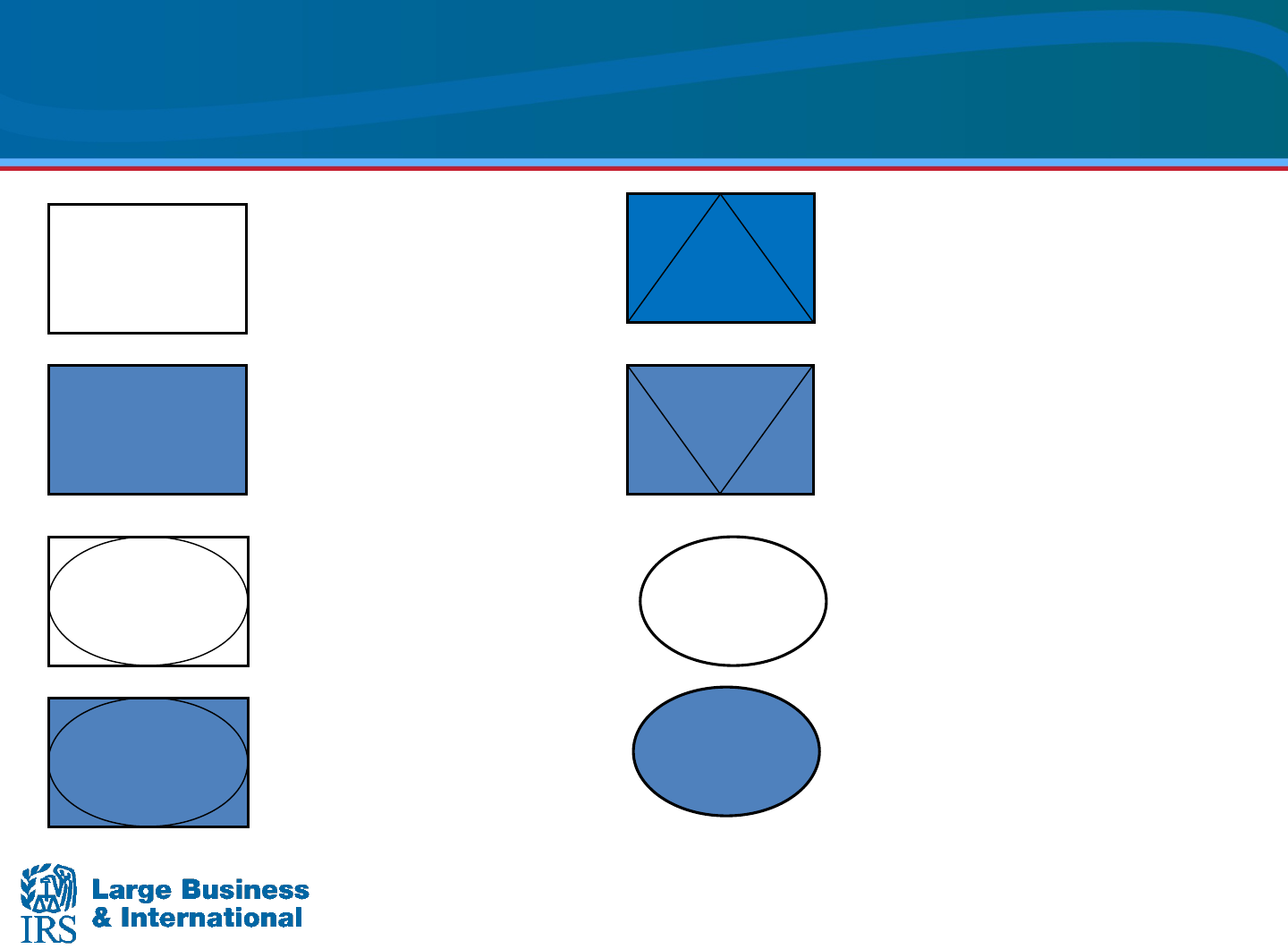
USP
DE
Controlled foreign
corporation
DE
Disregarded entity for US
tax purposes, corporation in
the country of organization
RH
BR
FBR
HP
Commonly Understood Symbols
(Cont’d)
CFC
US parent corporation
Disregarded entity that is
owned directly by a US
company – treated as a
branch for US tax purposes;
corporation in the country of
organization
Hybrid partnership: Treated as a
fl
o
w-t
hr
ough for US tax
purposes; treated as a
corporation in the country of
organization
Reverse hybrid corporation –
Treated as a corporation for US
tax purposes; treated as a flow-
through entity in the country of
organization
A true domestic branch (US and
foreign tax purposes)
A true foreign branch (US and
foreign tax purposes)
30
30
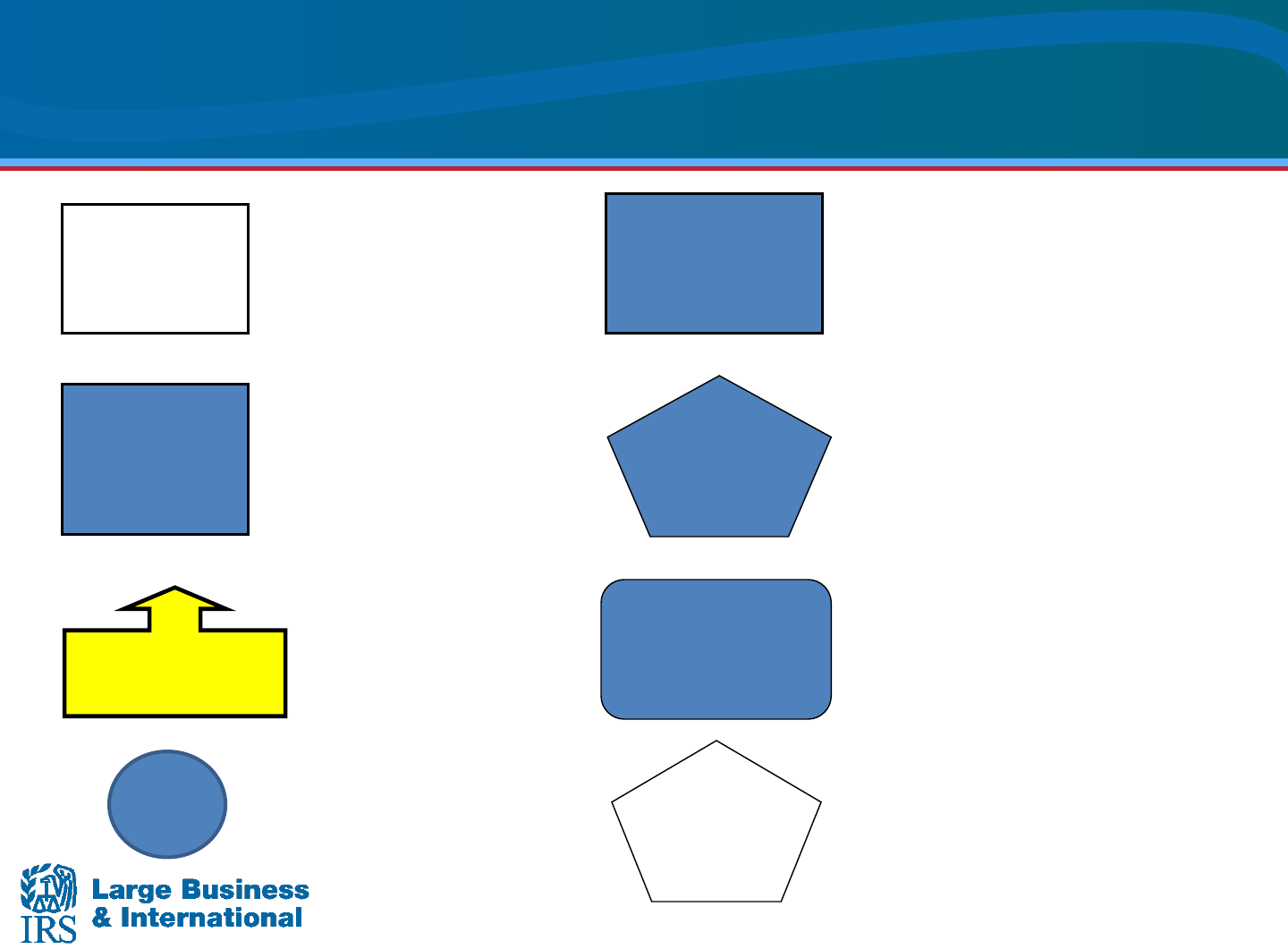
T
Offshore
IBC
Offshore
Bank
Financial
Account
Bank
Commonly Understood Symbols
USC
FC
(Cont’d)
Withholding agent
Treaty Implication
A US corporation or other
domestic entity
characterized as a
corporate entity under the
regulations (301.7701)
Foreign corporation
International business company
formed in an offshore secrecy
jurisdiction to disguise beneficial
ownership of financial accounts,
assets and investments
Bank located in an offshore
secrecy jurisdiction that provides
financial services for individual
international clients
Bank, investment, securities or
other financial account
Bank
31
31
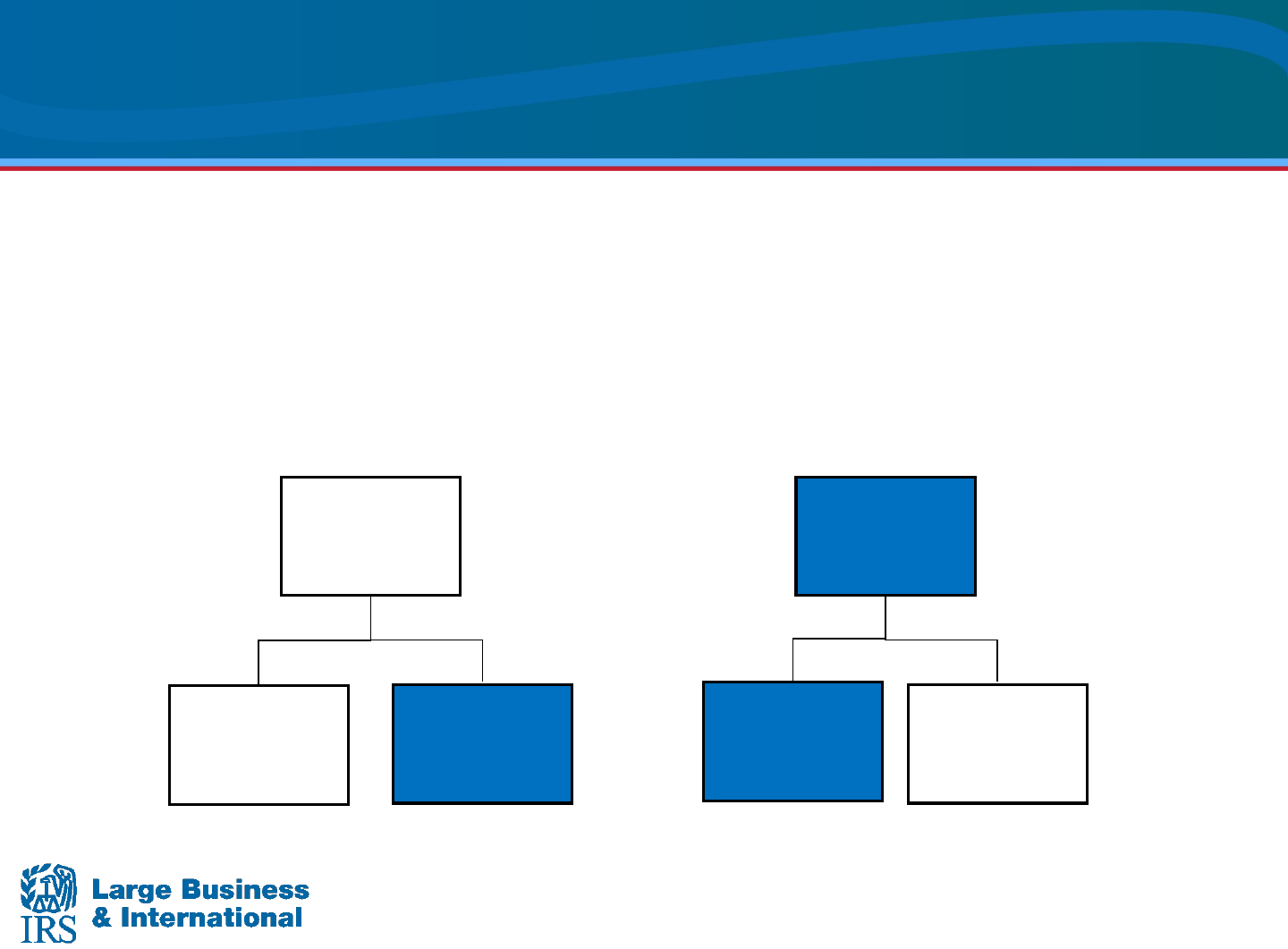
FP
FC
Commonly Understood Symbols
(Cont’d)
For IRS training purposes, foreign entities are distinguished from US
entities by shading their respective shapes. For example, the
following Outbound and Inbound structures have the foreign entities
shaded blue.
Outbound Inbound
USP
USS
CFC USS
32

Interpreting a Basic GTOC
Outbound Structure: US person is the ultimate
parent of a foreign entity or conducts foreign activities
through a branch. Some tax planning strategies
available to outbound structures include:
• Shift income or assets offshore
• Manage foreign tax credits, and
• Repatriate cash with little or no residual US tax cost
Inbound Structure: Foreign person is the ultimate
parent of a US entity or conducts US activities through
a branch. Some tax planning strategies available to
inbound structures include:
• Minimize the US tax base
• Shift US income-producing assets to low-tax jurisdictions
33

Compare BOY and EOY GTOC
Why compare BOY and EOY GTOCs?
• To identify any entity structure changes that may affect
the tax attributes of the US filer for the current year and
year to year changes
Changes in entity structures may result from:
• Acquisitions
• Dispositions
• Reorganizations
• Change in tax entity structure for US purposes only (e.g.,
CTB election, F-Reorgs, conversion to LLC, etc.)
− A CTB deemed liquidation of a CFC or other CTB
actions can result in deemed restructurings without any
foreign legal consequences.
34

Compare BOY and EOY GTOC (Cont’d)
Once the entity structure changes are identified,
analyze the changes to the US tax attributes of the
reporting entity
Examples of how the tax attributes may be affected:
• Non-taxable income inclusions
• Increase in FTC taken
• Increase in Foreign Sourced Income (FSI), decrease in
US sourced income
• Increase in US sourced expenses
• Income producing assets moved onshore or offshore
• Character of income as eligible for deferral vs. subpart F
or GILTI
35
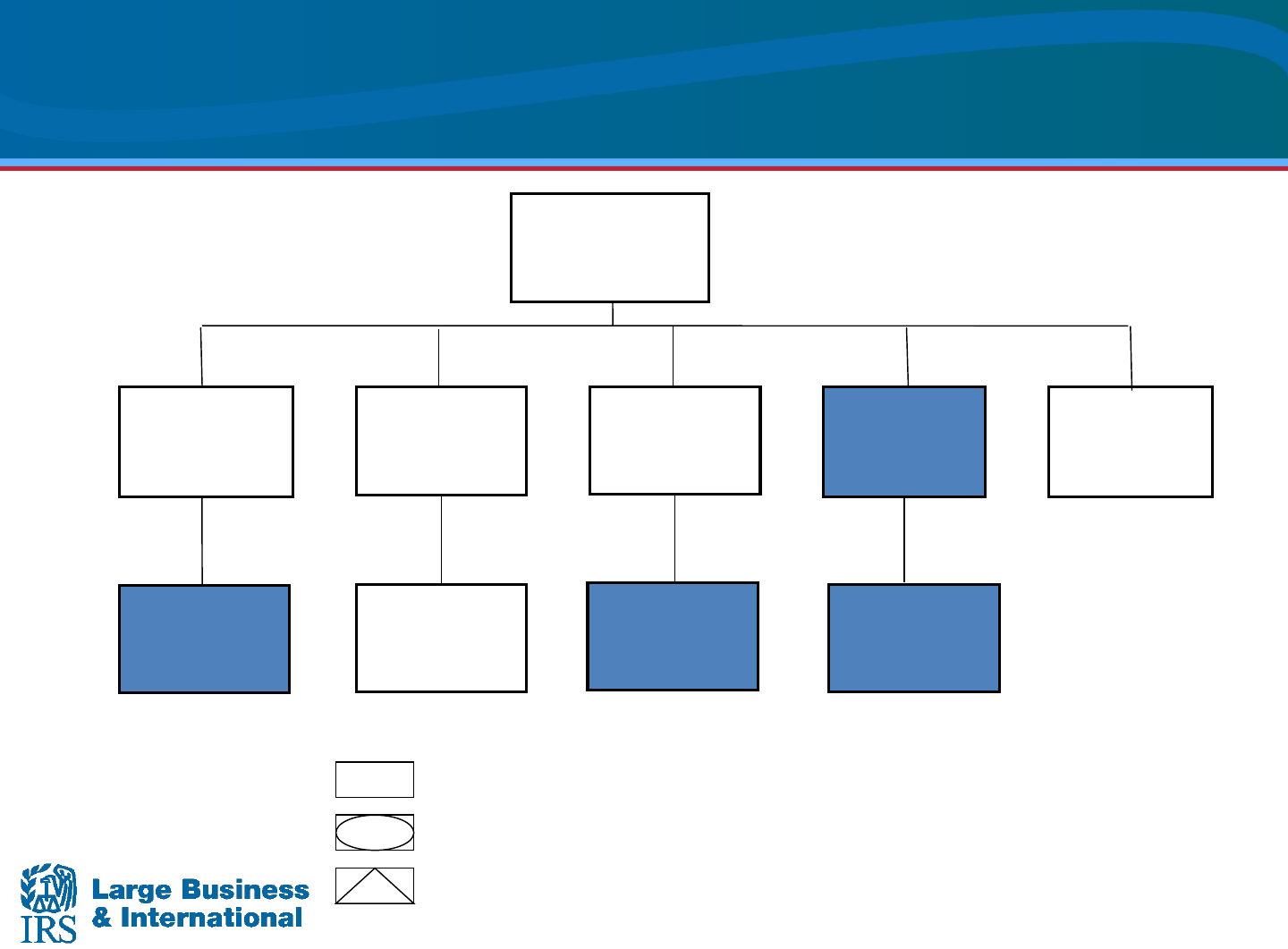
Corporation
Hybrid Entity - Disregarded Entity (DE) for US and Corporation for Foreign purposes
Hybrid Entity - Partnership for US and Corporation for Foreign purposes
US Sub1
DE2
DE10
US Sub6
US Sub4
CFC3
CFC5
CFC9
CFC7
GTOC Exercise (BOY)
USP
36
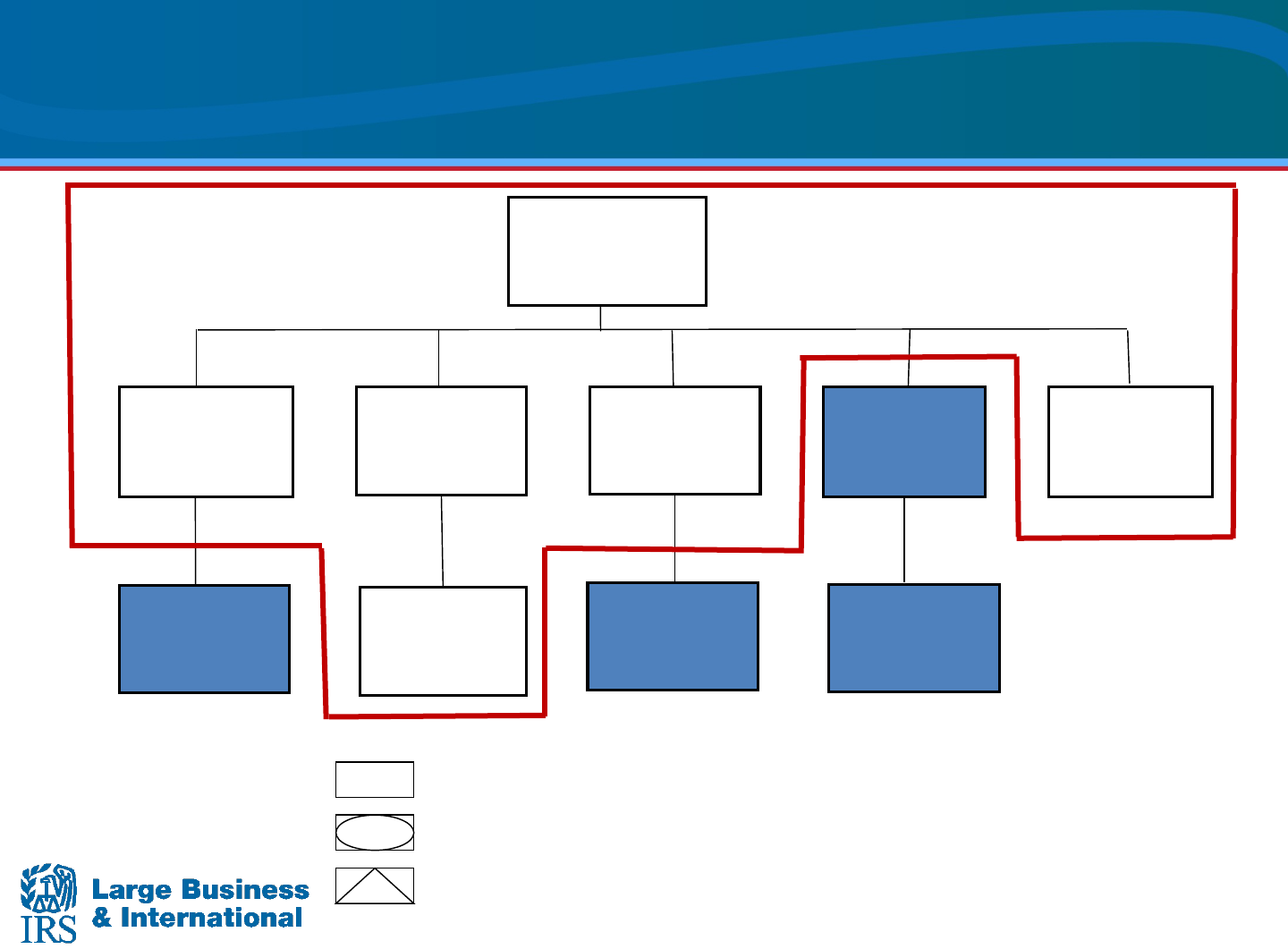
GTOC Exercise (BOY) (Cont’d)
USP
US Sub1
DE2
DE10
US Sub6
US Sub4
CFC3
CFC5
CFC9
CFC7
Corporation
Hybrid Entity - Disregarded Entity (DE) for US and Corporation for Foreign purposes
Hybrid Entity - Partnership for US and Corporation for Foreign purposes
37

Summary (BOY)
US Tax Group Offshore
• USP • CFC7
• US Sub1 • CFC3
• US Sub4 • CFC5
• US Sub6 • CFC9
• DE2
• DE10
38
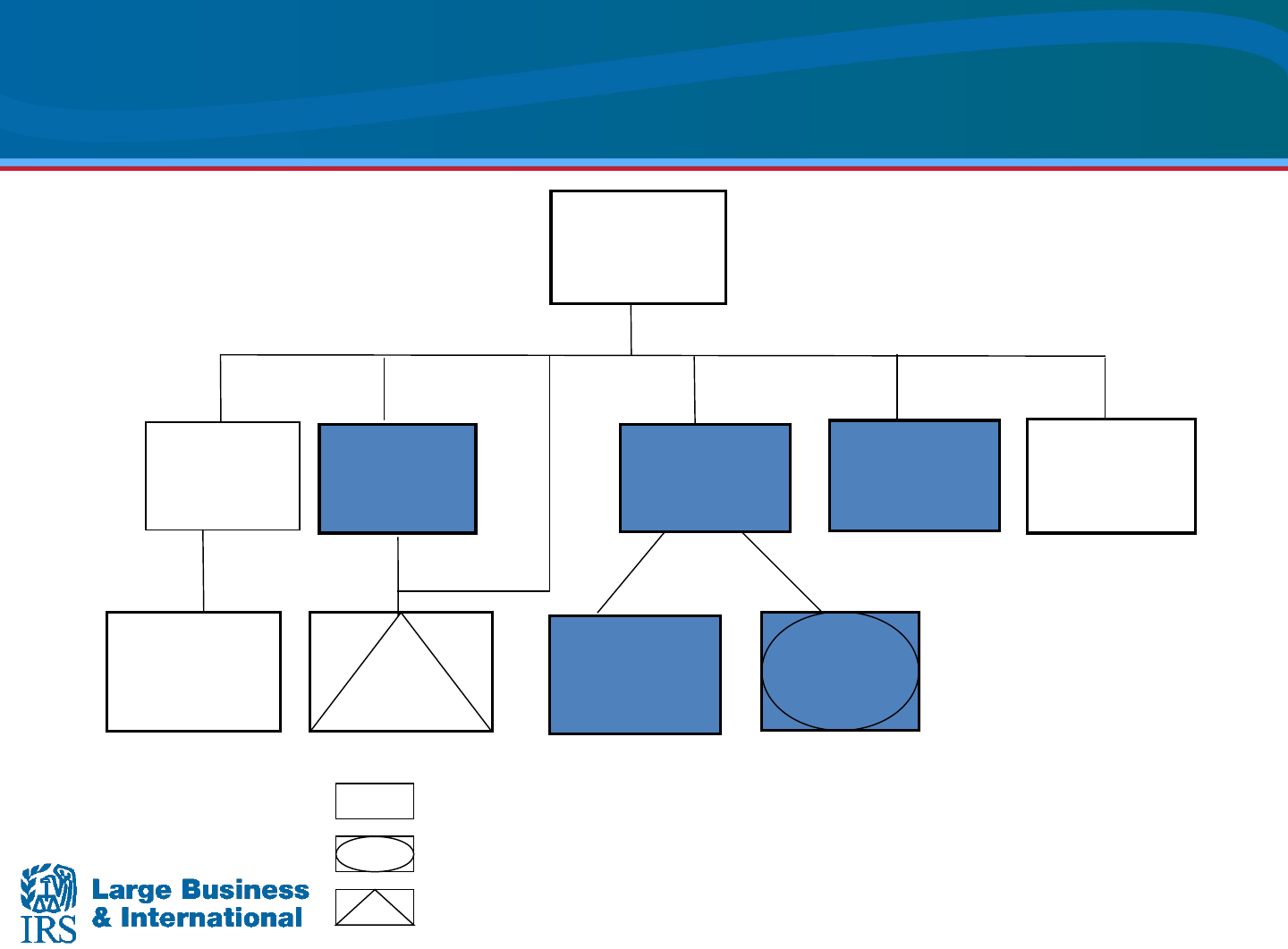
20%
80%
US
Sub1
DE5
CFC2
CFC9
CFC4
(with US4’s
assets)
US Sub6
CFC3
DE7
CFP10
GTOC Exercise (EOY)
USP
Corporation
Hybrid Entity - Disregarded Entity (DE) for US and Corporation for Foreign purposes
Hybrid Entity - Partnership for US and Corporation for Foreign purposes
39
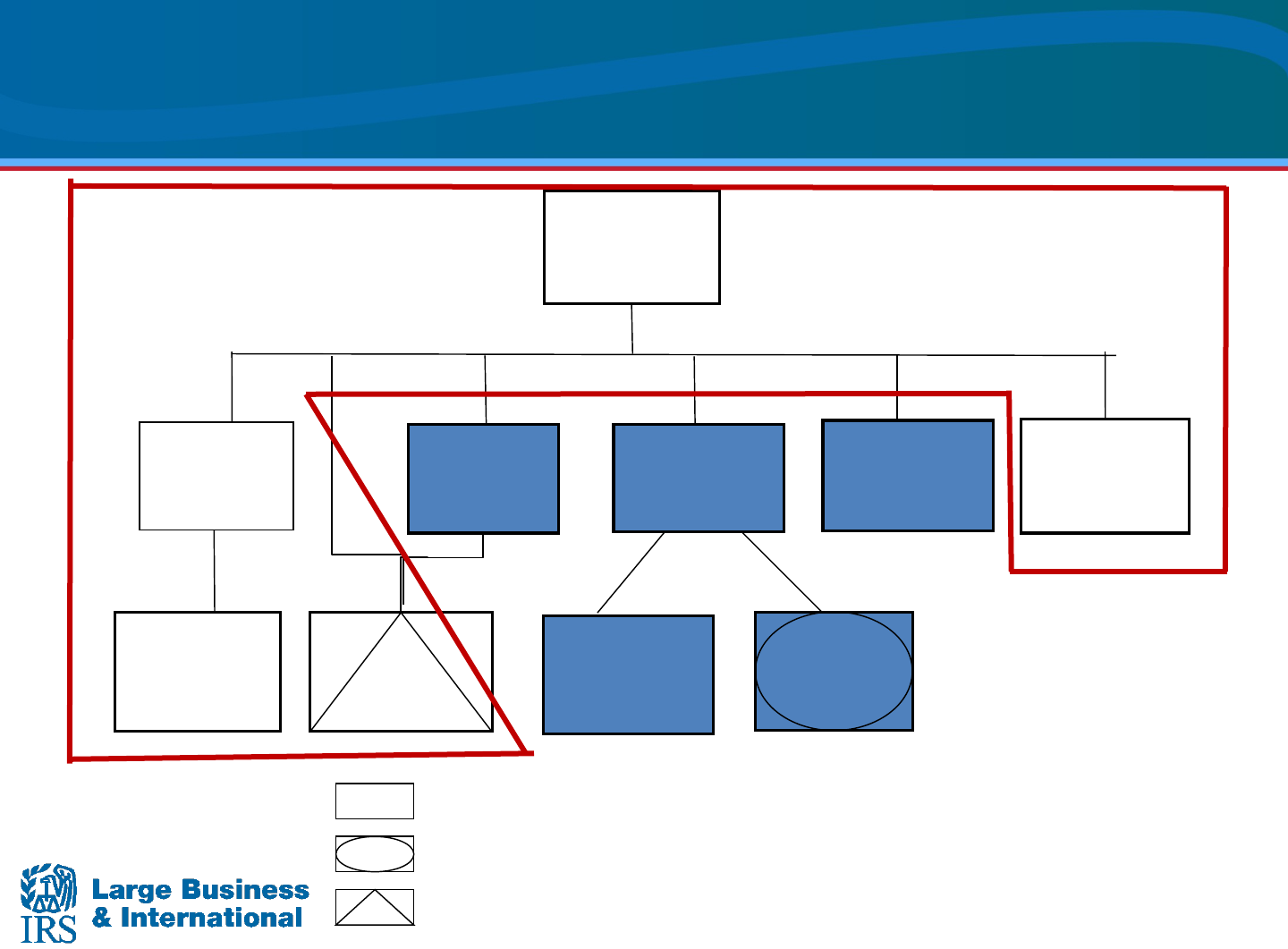
GTOC Exercise (EOY) (Cont’d)
Corporation
Hybrid Entity - Disregarded Entity (DE) for US and Corporation for Foreign purposes
Hybrid Entity - Partnership for US and Corporation for Foreign purposes
USP
20%
80%
US
Sub1
DE5
CFC2
CFC9
CFC4
(with US4’s
assets)
US Sub6
CFC3
DE7
CFP10
40

Summary (EOY)
US Tax Group
• USP
• US Sub1
• DE7
• US Sub6
• 80% of CFP10
Offshore
• CFC2
• 20% of CFP10
• CFC4
• CFC3
• DE5
• CFC9
41
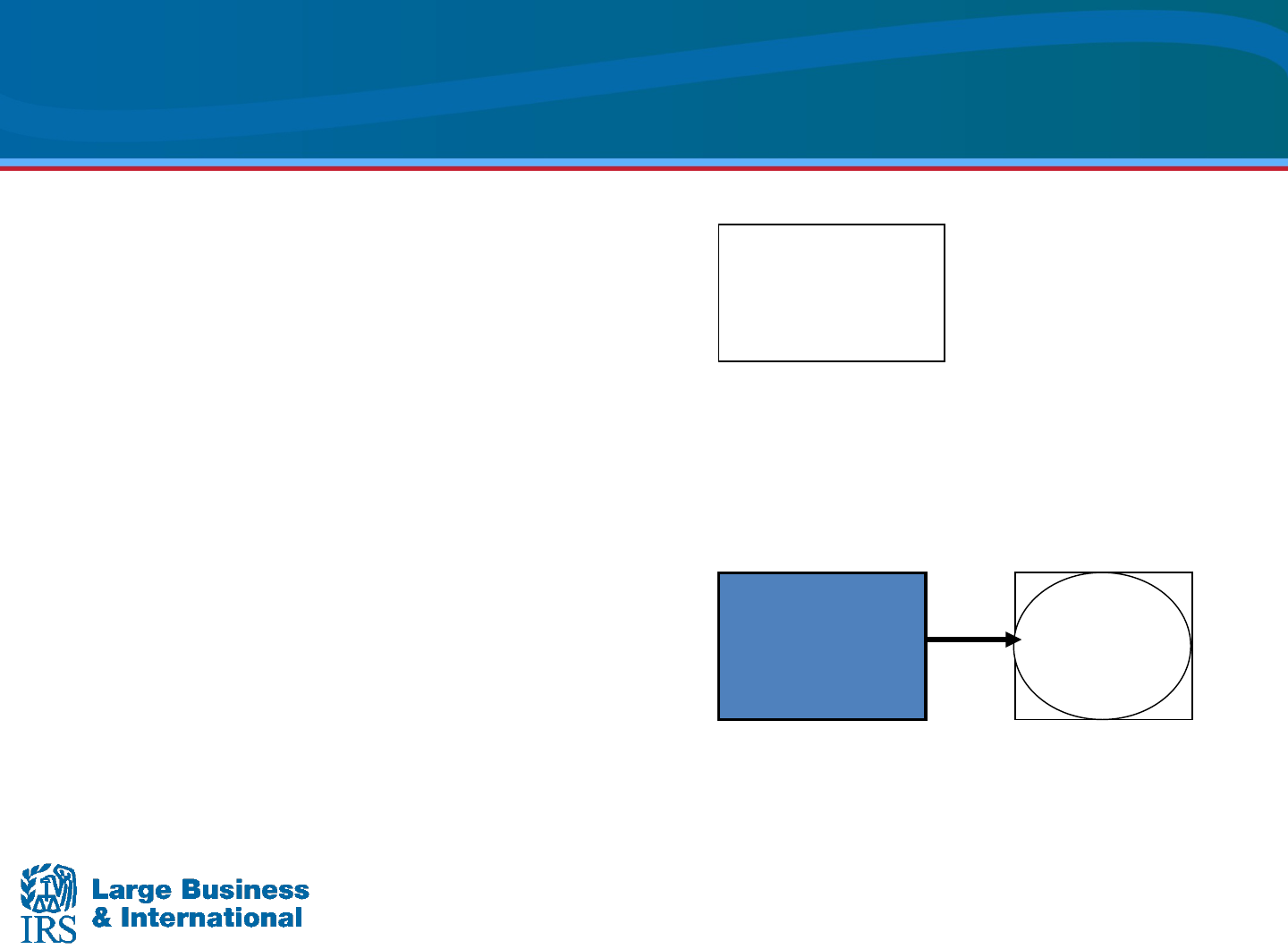
DE7
CFC7
Possible Transactions
US Sub 1
• No change in form
CFC7
• Made an election to
be disregarded
− Filed Form 8832
− Filed final Form 5471
− Files initial Form
8858
US Sub1
42
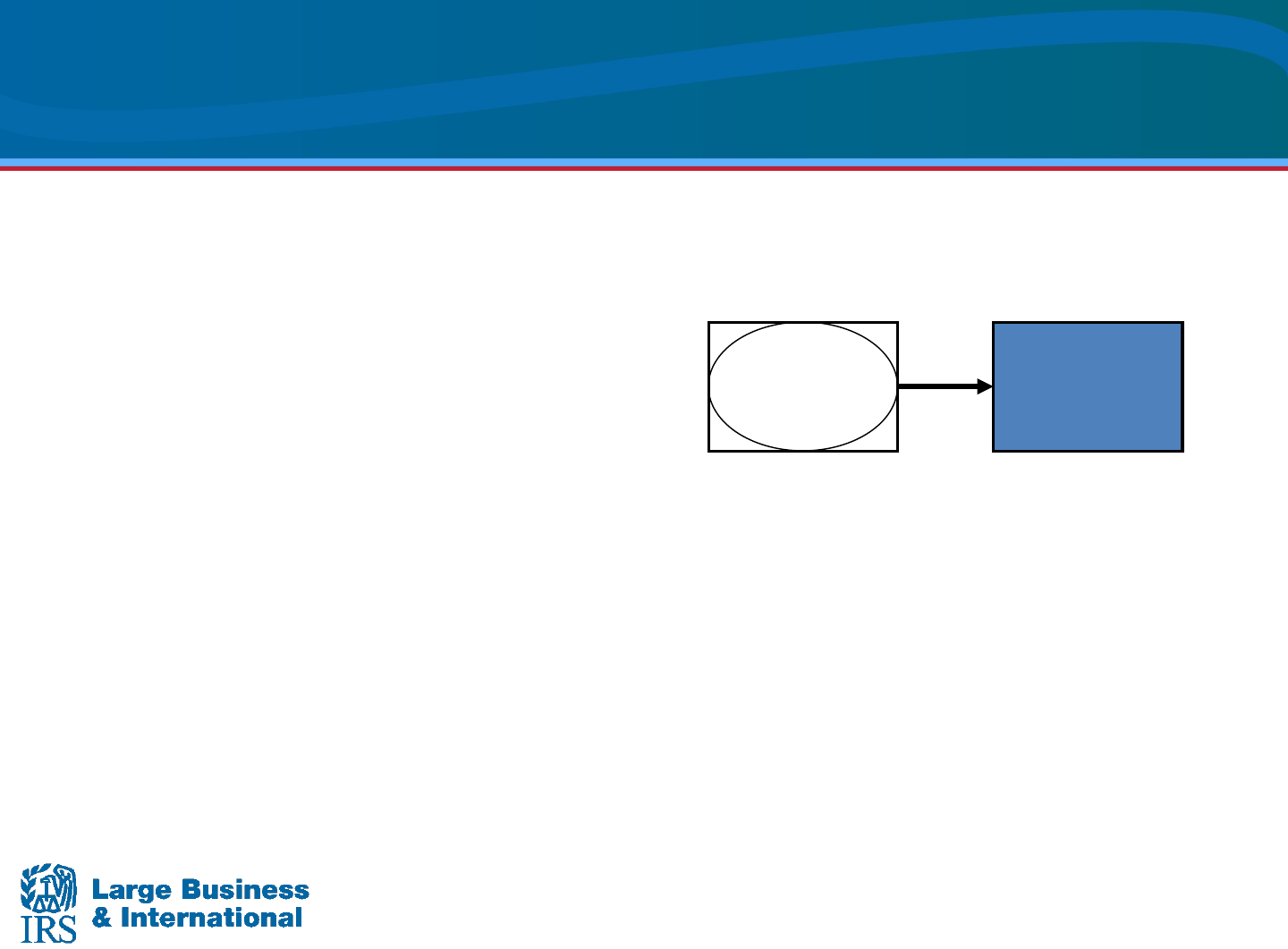
Possible Transactions (Cont’d)
DE2
• Made election to
be regarded
• Outbound transfer
of property (USP
filed Form 926)
DE2 CFC2
• Filed Form 8832
• Final Form 8858
• Files initial Form
5471
43
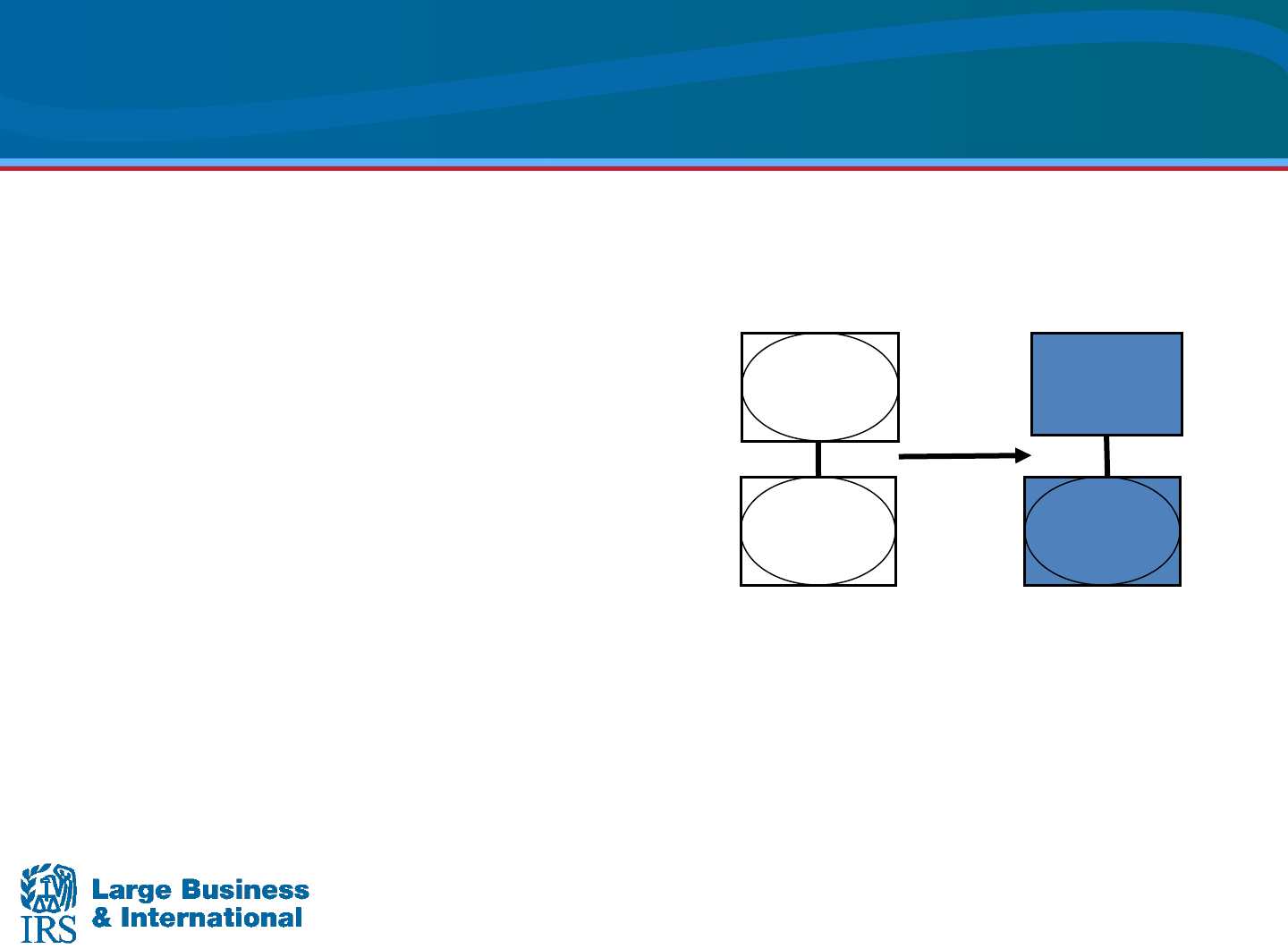
Possible Transactions (Cont’d)
DE10
• When DE2 elected
to be regarded, that
also caused the
outbound transfer of
DE10…
DE10
DE2
CFC2
DE10
44
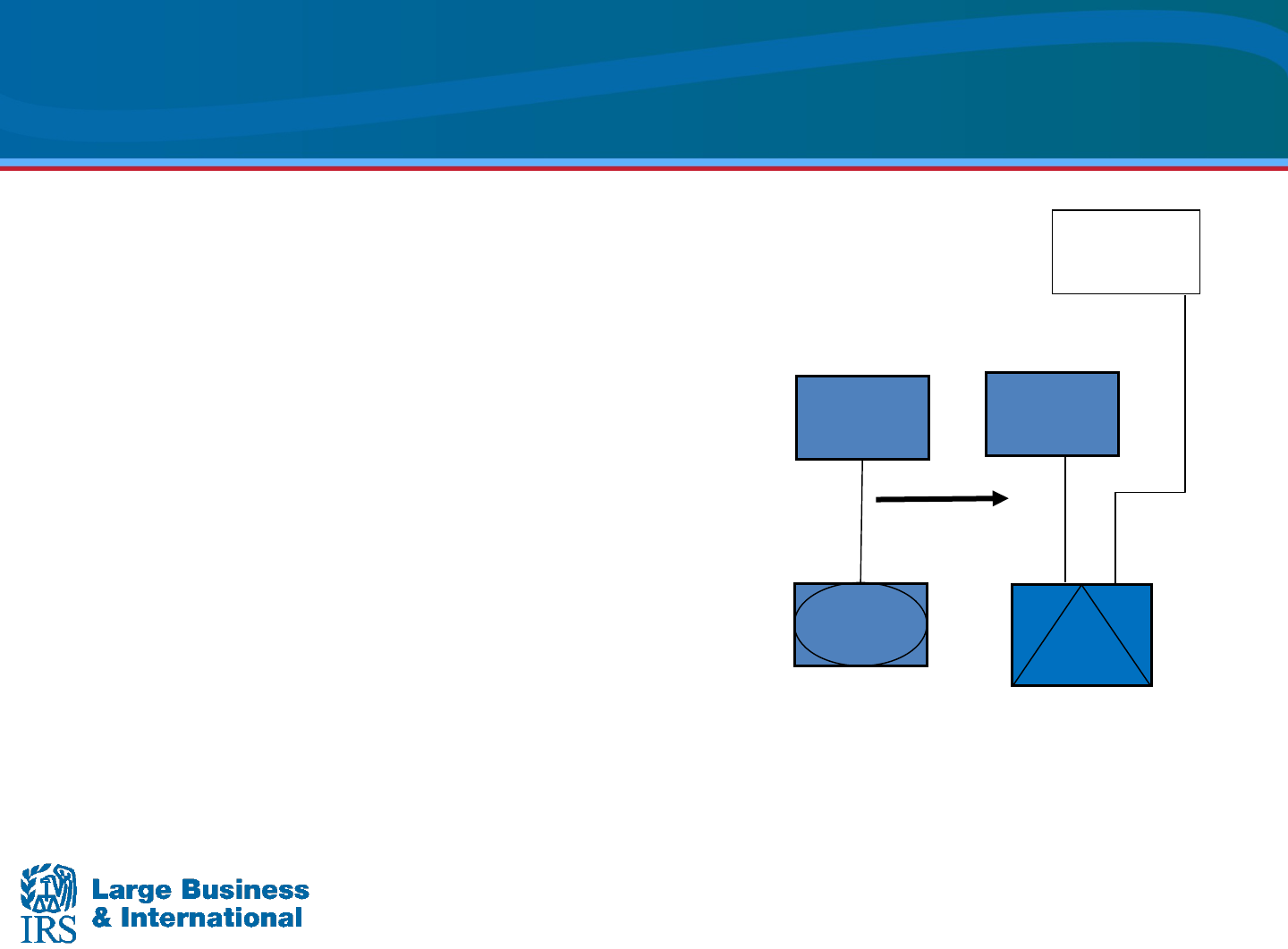
DE10
CFC2
CFP10
20%
CFC2
Possible Transactions (Cont’d)
DE10
• …DE10 remained a DE until USP
contributed additional assets
amounting to 80% of the value of
DE10 in exchange for an 80%
interest of the entity
• Now having more than one owner,
it can no longer be disregarded. It
undergoes a per se classification
change to a partnership (retaining
the passthrough nature of a DE)
• A Form 8832 entity change form is
not necessary
• It must now file a final Form 8858
and initial Form 8865
USP
80%
45

CFC4
Possible Transactions (Cont’d)
US Sub4
• Outbound transfer of property
• USP files Form 926 for assets
of US Sub4
• Likely files a Gain Recognition
Agreement (GRA)
• Files initial Form 5471
CFC3
US Sub4
• Parent would file Form 926 for
its stock owned by US Sub4
CFC3
• GRA likely filed for CFC3
stock
• Continues to file its Form 5471
46
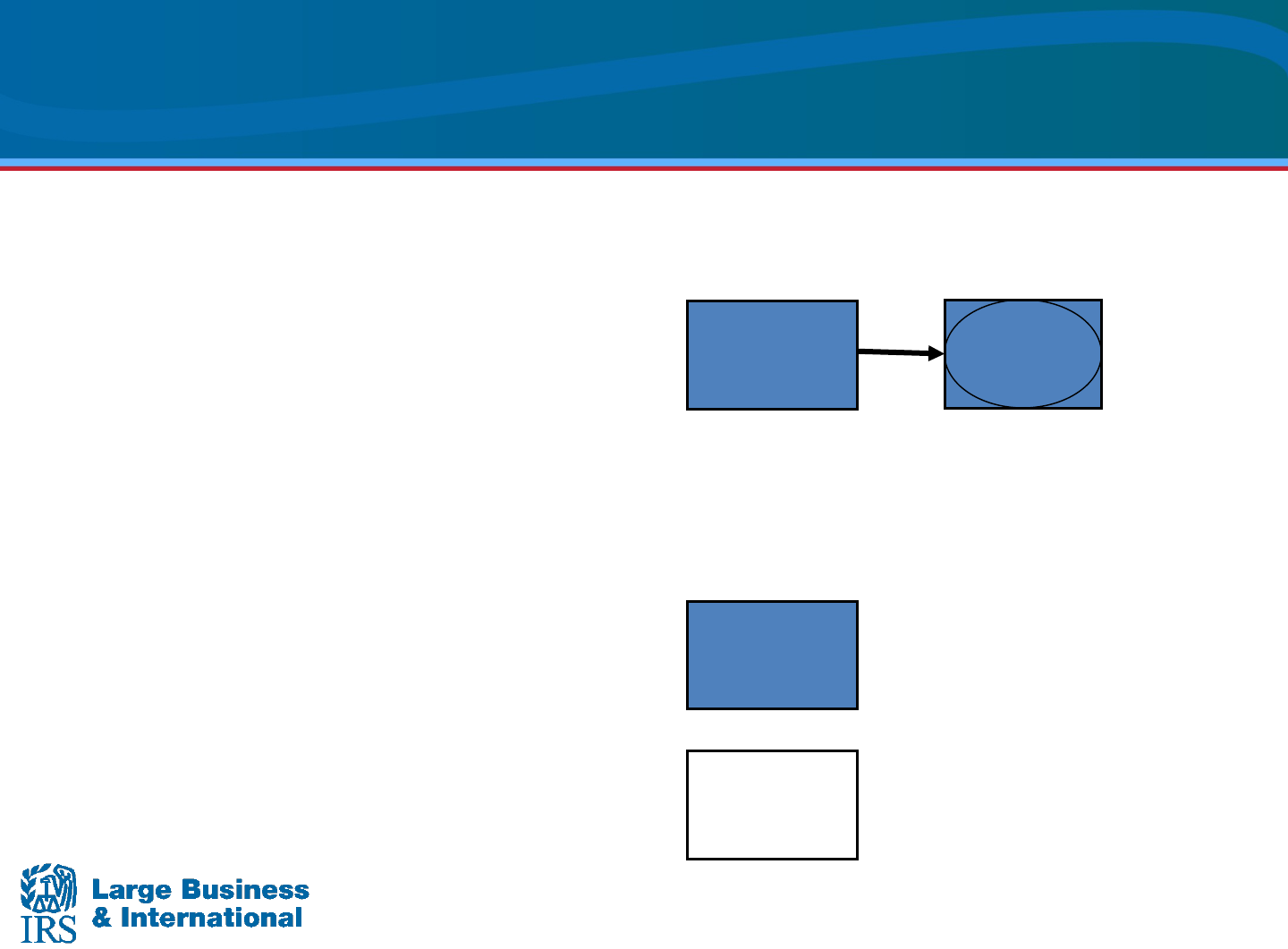
CFC5
DE2
US Sub6
Possible Transactions (Cont’d)
CFC5
• Foreign to foreign
transfer, so no GRA
needed
• Final Form 5471
• Files Form 8832
• Files initial Form 8858
CFC9
CFC9
• No change
CFC6
• No change
47

C. Common Global Tax Structures
in International Tax Planning

Outbound Transactions and ETR
Some of these activities may affect ETR
• Income shifting
• FDII maximization
• BEAT minimization
• Expense allocation and apportionment
• Affirmative subpart F use
• FTC maximization
• GILTI reduction management
• Participation exemption/Dividend Received Deduction
(DRD) maximization
• Manage interest expense allocation
• Loss importation
49
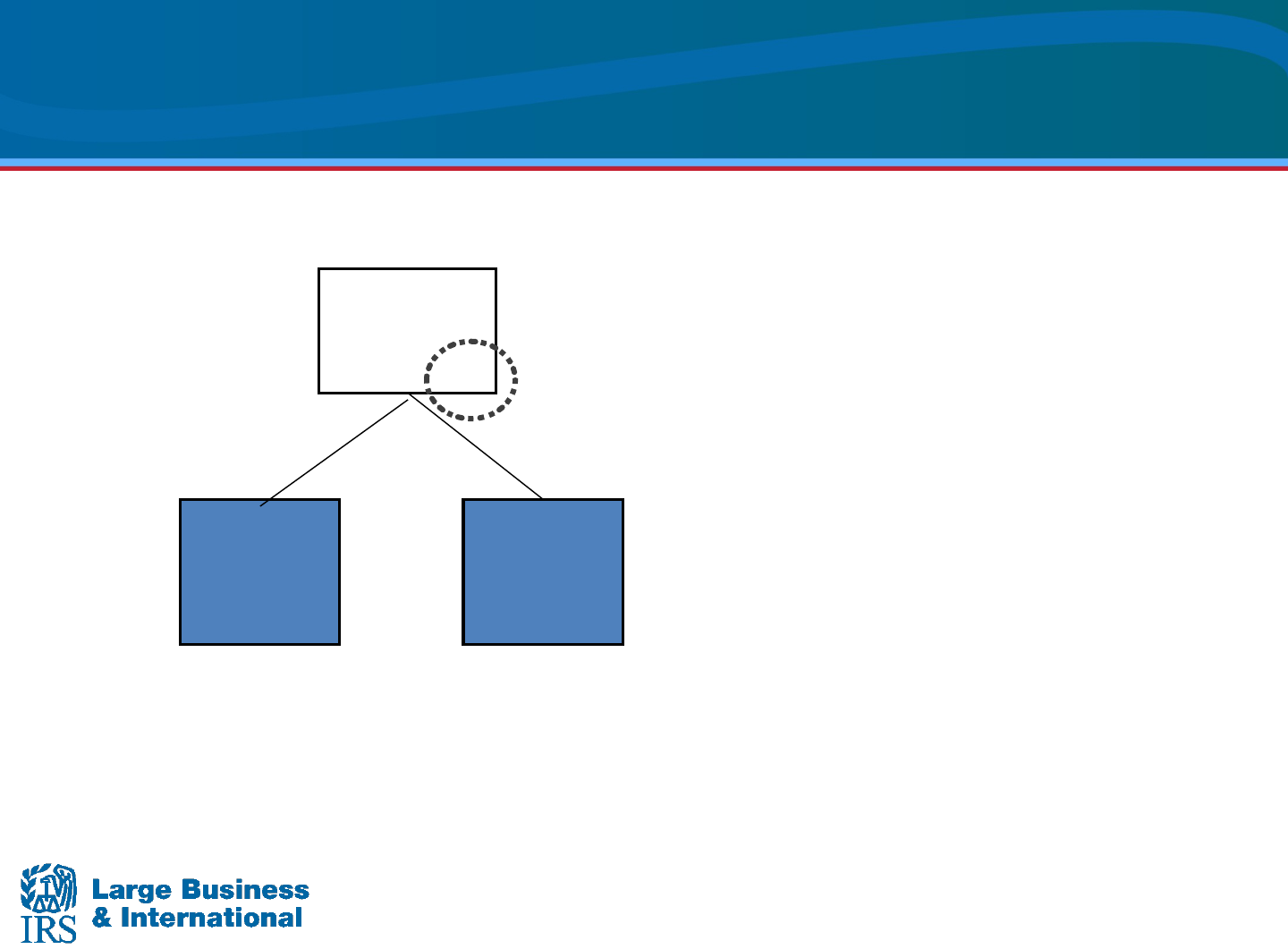
CFC1
(High Tax)
USP
CFC2
(Low Tax)
IP
Outbound Transaction Example
and ETR (Pre-TCJA)
Possible tax strategies
• Transfer pricing
• Transfer IP offshore
followed by license of IP
• E&P segregation
• FTC “hyping”
• Avoiding subpart F
50
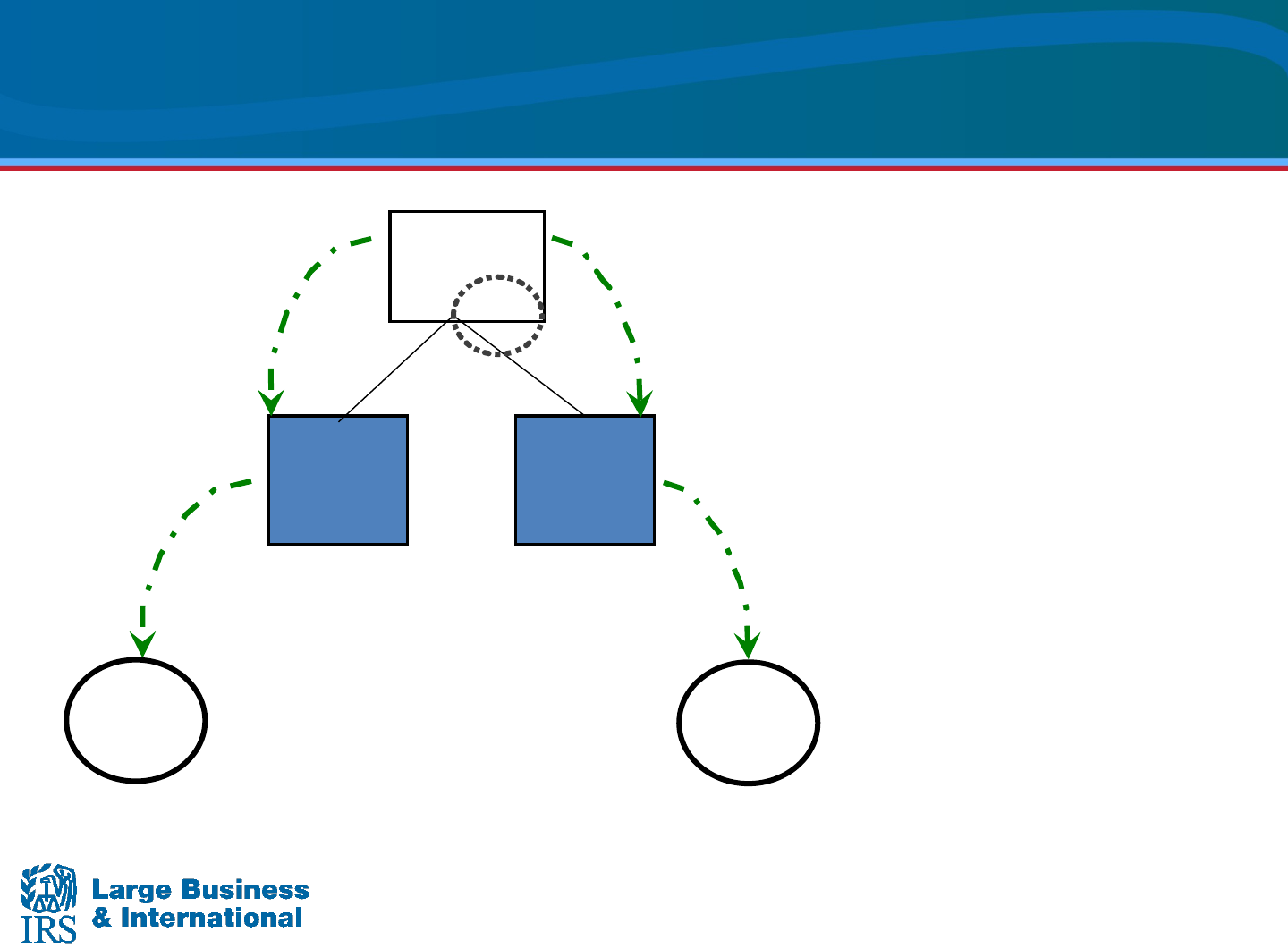
Outbound Transaction Example and
GILTI (Post-TCJA)
GILTI Effect
CFC1
(High Tax)
USP
CFC2
(Low Tax)
Customers
Customers
Goods
Goods Goods
Goods
IP
US parent corporation wholly
owns two foreign corporations
(“High Tax Co”) and (“Low Tax
Co”)
• USP performs
manufacturing
• USP owns the global IP
• USP transfers IP to
offshore foreign affiliates
• USP sells widgets to
High Tax Co and Low
Tax Co based on a
resale minus
• The overall foreign tax
rate is 27%
51
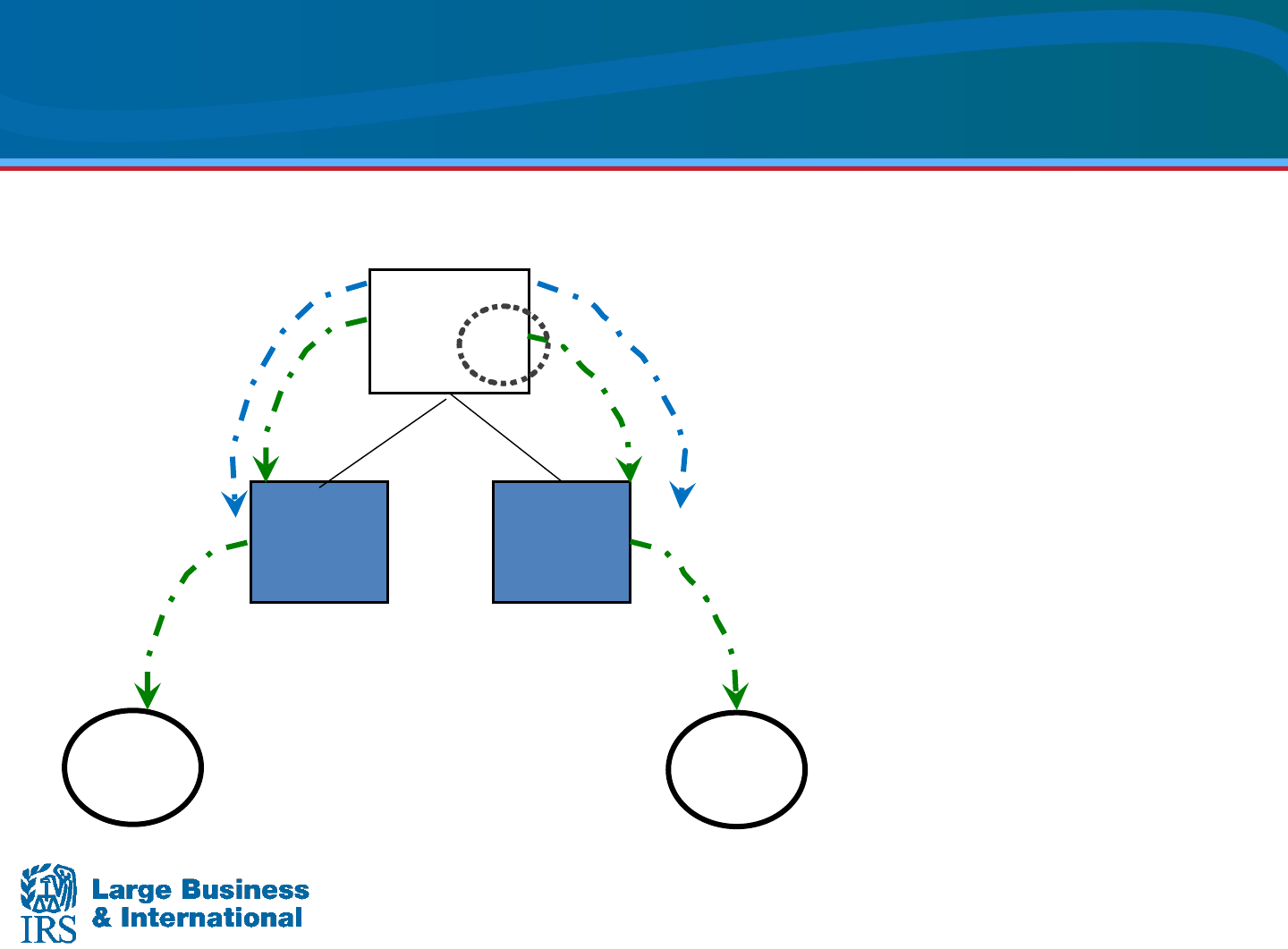
Outbound Transaction Example and
GILTI (Post-TCJA) (Cont’d)
License of IP
License of IP
Goods
CFC1
(High Tax)
USP
CFC2
(Low Tax)
Customers
Customers
Goods
Goods
Goods
IP
Possible tax issues
• USP could be in
situation where
excess FTCs are
permanently lost.
What can it do?
• Separate price of
intangibles from the
sale of goods
− May create
significant low-
tax, foreign-
source, general
basket income.
52
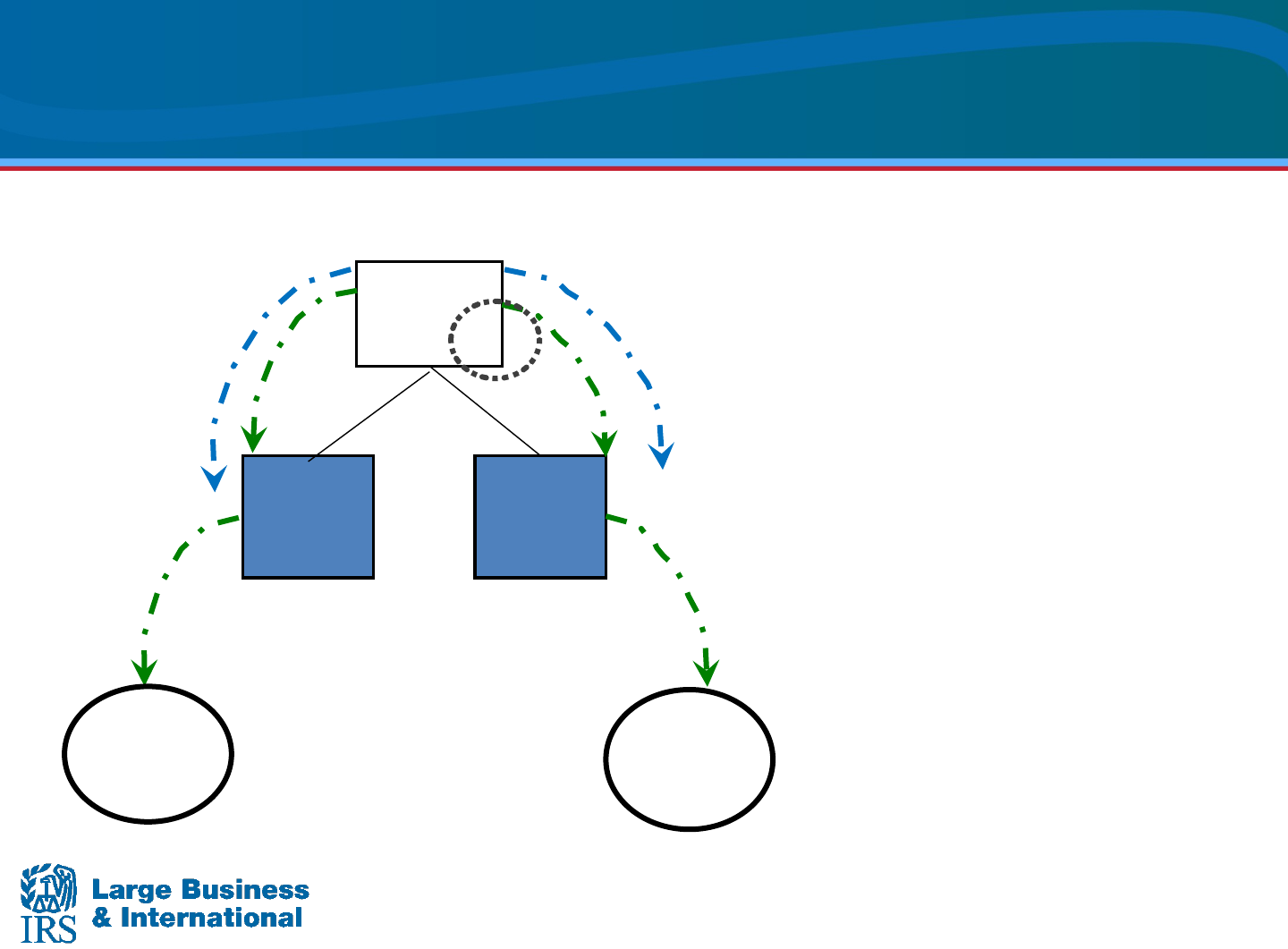
Outbound Transaction to Minimize ETR
and GILTI (Post-TCJA) (Cont’d)
License of IP
License of IP
Goods
CFC1
(High Tax)
USP
CFC2
(Low Tax)
Customers
Customers
Goods
Goods
Goods
IP
Possible tax issues
Could potentially blend this with
high-tax income currently in
GILTI basket through
affirmative Subpart F planning?
• By engaging in this
planning (separating
royalty and then
affirmative Subpart F
planning), USP has
optimized its tax position
and maximized FTC
utilization?
• IP royalties may also
produce FDII
53

Inbound Transactions and ETR
Taxpayers may use one or more of the
following typical transactions to minimize ETR
• Efficient use of entity classification rules
• Expense allocations to US branch/PE
• Income shifting
• Loans through low-tax affiliates
• Section 163(j) optimization
• Foreign guarantees
• BEAT minimization
• FDII maximization
54
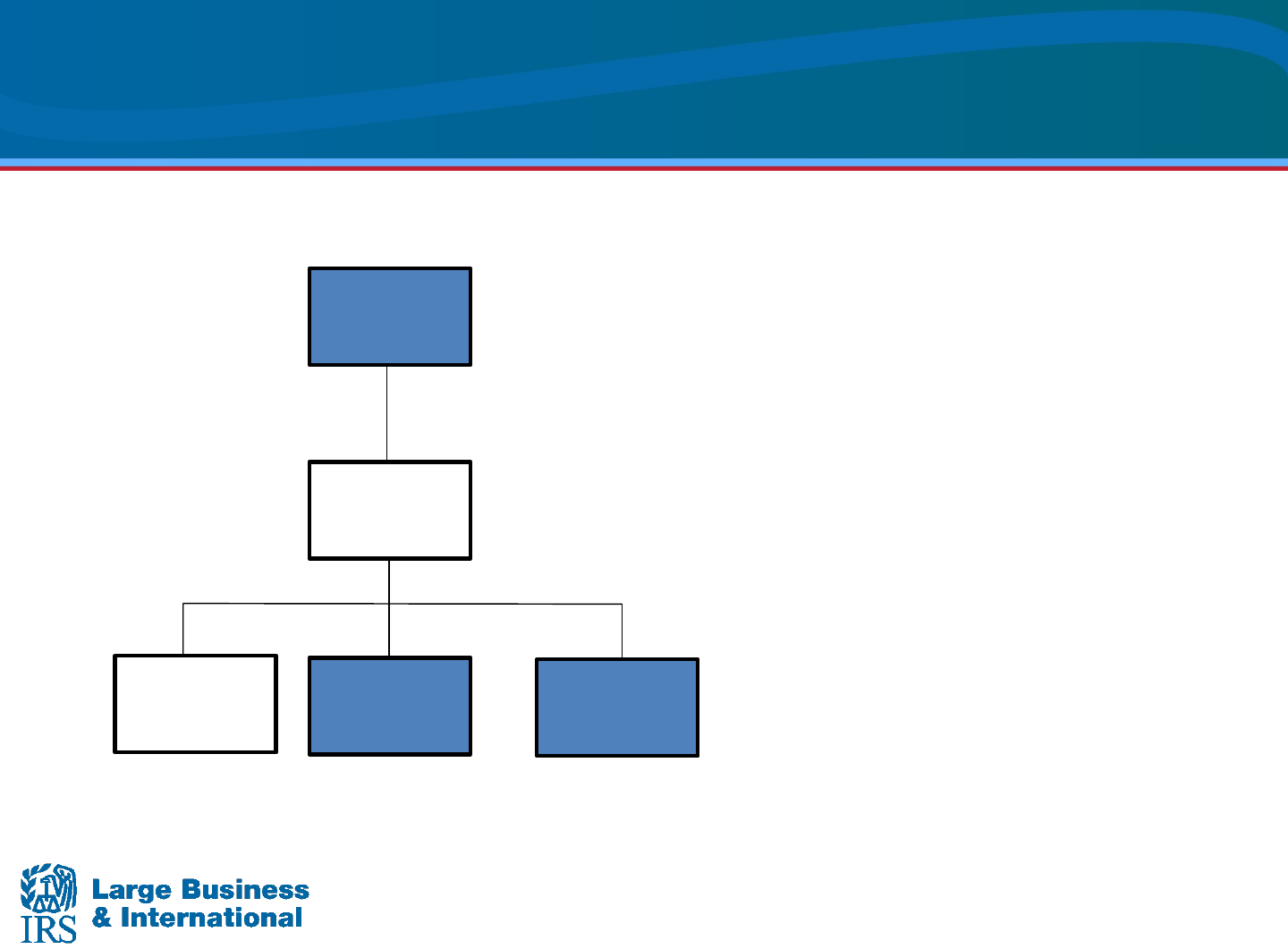
Inbound Transaction Example and
ETR (Pre-TCJA)
FP
US Sub 1
US Sub 2
FC
FC
Possible tax issues
• US Sub 1 enters into
loan with FP
• US Sub 1 pays
management and
oversight fees
• Transfer pricing
55
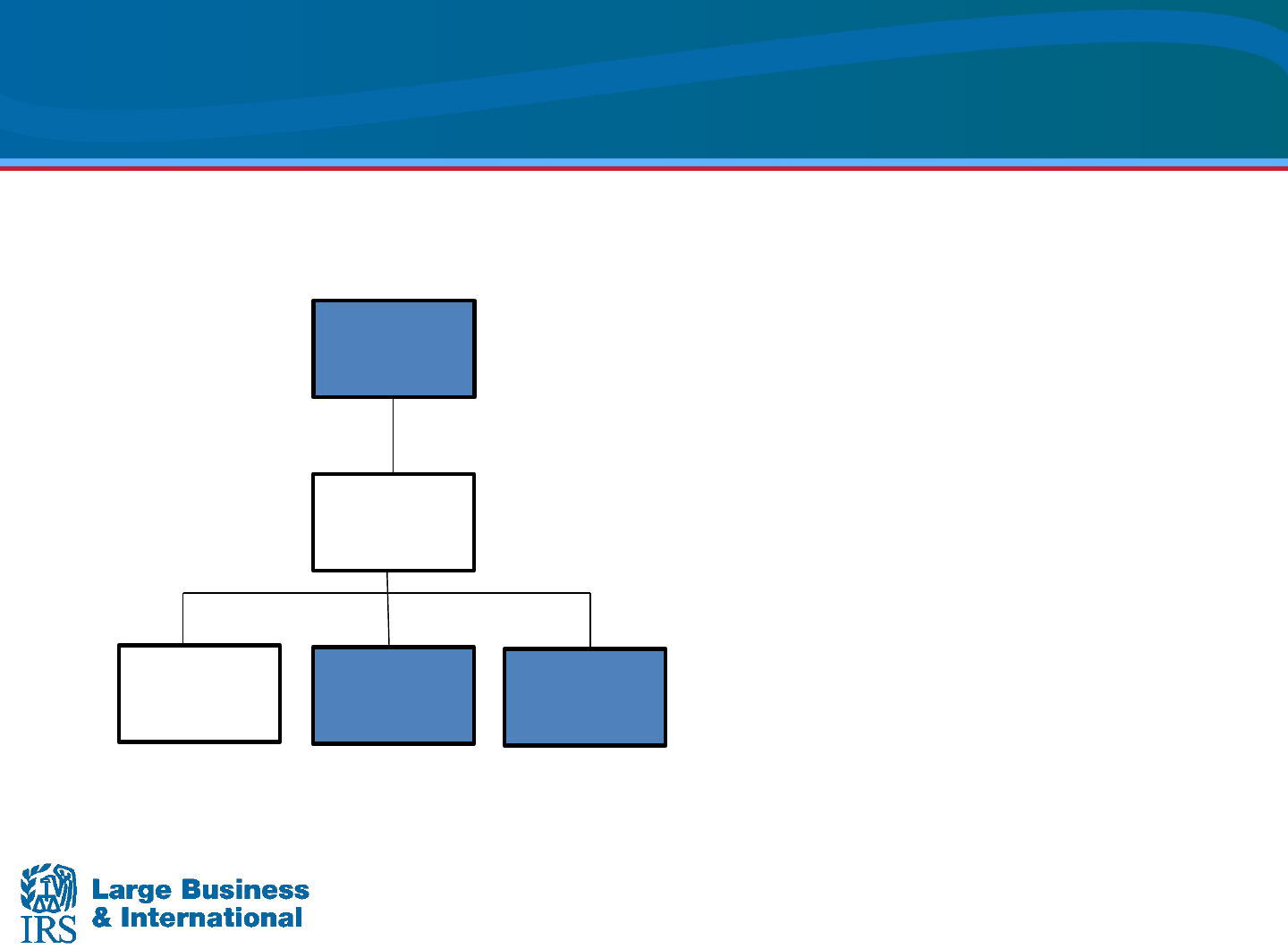
FP
US Sub 2
FC
FC
US Sub 1
Inbound Transaction Example and
ETR (Post-TCJA)
• Related party loans are
subject to new rules: BEAT,
IRC 163(j) (modified old
section 163(j), and new
hybrid rules
• Following US tax strategies
may still be employed:
− Allocation and
apportionment of overhead
expenses
− Transfer pricing
− Optimizing BEAT and IRC
163(
j) calculations
56

What did we learn?

Summary
You should now be able to:
A. Identify taxpayer's objectives in global tax
planning
B. Describe how to interpret a taxpayer’s GTOC
C. Identify typical global tax structures for
international tax planning strategies
58

Appendix

Glossary of Terms
Acronym/Terms Definition
BOY Beginning of Year
BEAT Base Erosion and Anti-abuse Tax
BR True Domestic Branch for US and foreign tax purposes
CFC Controlled Foreign Corporation
CSA Cost Sharing Arrangement
CTB Check-the-Box
DE Disregarded legal entity for US Tax purposes
DRD Dividends Received Deduction
E&P Earnings and Profits
EOY End of Year
ECI Effectively Connected Income
EPS Earnings Per Share
60

Glossary of Terms (Cont’d)
Acronym/Terms Definition
ETR Effective Tax Rate
FBR True Foreign Branch
FC Foreign Corporation
FDE Foreign Disregarded Entity
FDII Foreign Derived Intangible Income
Financial/”Book” US GAAP Financial Book income
FP Foreign Parent Company
FSI Foreign Source Income
FTC Foreign Tax Credit
FTR Foreign Tax Rate
GTOC Global Tax Organizational Chart
GILTI Global Intangible Low-Taxed Income
GRA Gain Recognition Agreement
61

Glossary of Terms (Cont’d)
Acronym/Terms Definition
Holdco Holding Company
Hubco Foreign holding company organized in a low-tax jurisdiction, often
vested with centralized functions and centralized control of IP
Hybrid Hybrid: Flow through for US tax/Corporation for country of incorporation
HP Hybrid Partnership
IBC International Business Company
IP Intangible Property
IDR Information Document Request
LLC Limited Liability Company
MNE Multinational Entity
PRI Permanently Reinvested Income (Foreign)
QBU Qualified Business Unit
RH Reverse Hybrid: Corporation for US tax and flow through for foreign
country of incorporation
62

Glossary of Terms (Cont’d)
Acronym/Terms Definition
QBU Qualified Business Unit
PTI Previously Taxed Income
PTR Partner
RH Reverse Hybrid: Corporation for US tax and flow through for foreign
country of incorporation
SEC Securities Exchange Commission
USC United States
USP United States Parent
USS United States Subsidiary
TCJA Tax Cuts and Job Act of 2017
63

